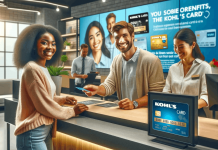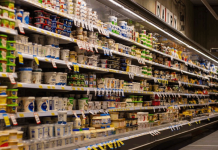Access to a phone has become an essential part of daily life, allowing us to connect with loved ones, search for employment, and access vital services.
For those who rely on SNAP (Supplemental Nutrition Assistance Program) benefits to make ends meet, securing a free phone can be a valuable resource.
This guide will provide a clear and straightforward overview of the steps and eligibility criteria required to qualify for a free phone through SNAP. Let's get started.
What is SNAP?
SNAP, which stands for Supplemental Nutrition Assistance Program, is a federal assistance program in the United States designed to provide eligible low-income individuals and families with funds to purchase nutritious food.
It is commonly known as the food stamp program.
Purposes of the SNAP Program
The SNAP program, or Supplemental Nutrition Assistance Program, serves critical purposes:
- Combat Hunger: SNAP addresses hunger by providing financial assistance for food purchases.
- Promote Nutrition: It encourages the selection of healthier, balanced food options. Economic Support: SNAP helps low-income households manage their budgets effectively.
- Reduce Poverty: By aiding vulnerable populations, SNAP contributes to poverty reduction.
- Boost Local Economies: SNAP benefits stimulate local businesses and job opportunities.
- Temporary Aid: SNAP offers temporary assistance during challenging times.
- Federal-State Partnership: The program operates through a federal-state collaboration for flexibility.
These concise points capture the key purposes of the SNAP program effectively.
Eligible Purchases with SNAP Benefits
SNAP benefits help low-income individuals and families purchase essential, nutritious food. Here's a list of what you can buy with SNAP benefits:
- Fruits and Vegetables: Fresh, frozen, canned, and dried fruits and vegetables are all eligible.
- Meat, Poultry, and Fish: This category includes various cuts of meat, poultry, and fish.
- Dairy Products: Milk, cheese, yoghurt, and other dairy items are allowed.
- Breads and Cereals: You can buy bread, cereals, rice, pasta, and other grain-based products.
- Snack Foods: Some snack items like chips and cookies are eligible if they are intended for home consumption and not immediate consumption at the store.
- Non-Alcoholic Beverages: You can purchase non-alcoholic beverages like fruit juices, coffee, and tea.
- Seeds and Plants: SNAP benefits can be used to buy seeds and plants that produce food for your household.
- Baby Food and Formula: Baby food and infant formula are eligible.
- Non-Food Items: While the primary focus is on food, some non-food items like paper products and soap may be eligible in certain states.
- Special Dietary Foods: If you have a medical condition that requires special dietary foods, those may also be eligible for a doctor's prescription.
Remember that eligibility rules and allowable items vary by state, so you should check your state's specific guidelines.
The Lifeline Assistance Program
The Lifeline Assistance Program is a vital initiative to bridge the digital divide and ensure communication access for low-income individuals. We'll delve into the critical aspects of this program.
- Accessibility: Lifeline provides affordable phone and broadband services, enabling low-income households to stay connected.
- Subsidized Services: Eligible participants receive discounts on monthly phone or internet bills, making these essential services more affordable.
- Income-Based Eligibility: Individuals must meet specific income criteria or participate in federal assistance programs like SNAP to qualify.
- Federal Program: Lifeline is a federal program available across the United States and is managed by the Federal Communications Commission (FCC).
- Choice of Providers: Participants can choose from various service providers participating in the Lifeline program, ensuring competition and options.
- No Contract Obligation: Lifeline services generally do not require participants to sign long-term contracts.
- Broadband Expansion: Recent updates to Lifeline also include support for broadband internet access, recognizing the increasing importance of online connectivity.
- Verification Process: Subscribers must annually re-certify their eligibility to continue receiving Lifeline discounts.
- Emergency Services: Lifeline ensures individuals can access 911 emergency services through their phones.
- Digital Inclusion: By making communication more accessible, Lifeline contributes to digital inclusion and reduces disparities in access to information.
Understanding the Lifeline Assistance Program is crucial for those seeking affordable communication options, especially if they qualify through programs like SNAP.
Eligibility Criteria
To access the Lifeline Assistance Program and qualify for affordable communication services, individuals must meet specific eligibility criteria:
- Income Threshold: Participants must be at or below 135% of the federal poverty guidelines.
- Participation in Assistance Programs: Qualification is also possible through federal assistance programs like SNAP, Medicaid, SSI, Federal Public Housing Assistance, or Veterans Pension and Survivors Benefit Programs.
- Tribal Program Participation: Those living on Tribal lands may have a higher income threshold and can qualify through participation in Tribal-specific assistance programs.
- No Dual Enrollment: Lifeline subscribers cannot receive more than one Lifeline-supported service per household.
- Documentation: Eligibility verification typically requires applicants to provide documentation such as income statements or program participation proof.
Meeting these criteria ensures that individuals can access the benefits of the Lifeline Assistance Program, helping them stay connected affordably.
Applying for SNAP and the Free Phone
Applying for SNAP benefits and the free phone through the Lifeline Assistance Program is straightforward. Here are the key steps and information you need:
- Check Eligibility: Determine if you meet SNAP's income or assistance program criteria, as this is often the first step to qualify for a free phone.
- Contact SNAP Office: Contact your local SNAP office or apply online through their official website to start the SNAP application process.
- Submit Required Documents: To support your SNAP application, prepare and submit the necessary documents, such as income statements.
- Lifeline Application: Once approved for SNAP, inquire about the Lifeline Assistance Program with your SNAP caseworker and express your interest in obtaining a free phone.
- Choose a Provider: Select a Lifeline service provider in your area. You can find a list of participating companies on the Lifeline website.
- Complete Lifeline Application: Fill out the Lifeline application form provided by your chosen service provider. This form will verify your eligibility for the free phone.
- Provide Documentation: If required, submit any additional documents your chosen service provider requested to confirm your eligibility.
- Wait for Approval: Once your Lifeline application is submitted, wait for approval, which typically takes a few weeks. Once approved, you'll receive your free phone.
- Maintain Eligibility: Keep your SNAP benefits current and ensure you meet the Lifeline Assistance Program's eligibility requirements for ongoing phone service.
Following these steps, you can apply for SNAP benefits and secure a free phone through the Lifeline Assistance Program, ensuring affordable access to essential communication services.
Conclusion
In conclusion, learning how to qualify for a free phone with SNAP can significantly improve the lives of those facing financial challenges. The Lifeline Assistance Program offers essential communication and connection.
By meeting eligibility criteria, applying, and selecting a provider, SNAP recipients gain access to this vital resource.
This enhances their ability to secure employment, access services, and stay informed, contributing to their overall well-being and self-sufficiency in our communication-dependent world.










